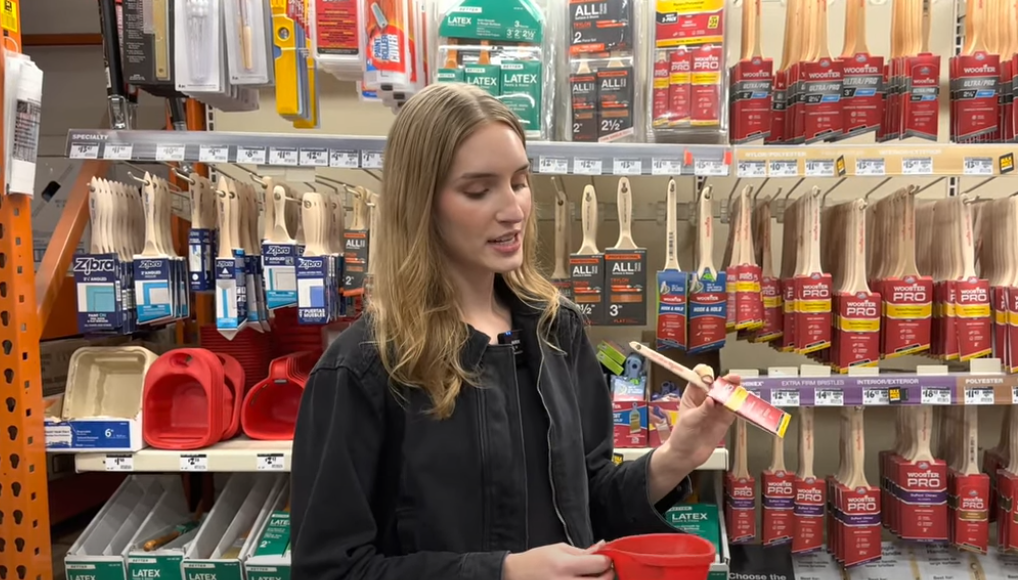Teaching English in a traditional classroom is a well-established method, but real-life, immersive environments offer some of the most effective ways to help learners build vocabulary, confidence, and communication skills. One exciting and practical place to teach English is Home Depot—a large home improvement retail store found across the United States and Canada. Teaching English at Home Depot combines functional language learning with hands-on experiences in a real-world setting, helping learners develop practical vocabulary they can use at work, at home, or in daily conversations.

Why Home Depot is a Great Place for English Learning
Home Depot isn’t just a store; it’s an interactive space filled with items people use for construction, gardening, painting, electrical work, plumbing, and interior design. Each department offers rich opportunities to teach topic-specific vocabulary, customer service expressions, and practical English phrases. This makes it a perfect environment for ESL (English as a Second Language) learners—especially those working in trades, construction, retail, or customer service.
Here are a few reasons why teaching English at Home Depot is so effective:
- Real-life context: Learners interact with real products and situations.
- Hands-on experience: Physical engagement helps with memory and vocabulary retention.
- Workplace relevance: Many ESL learners work in similar environments.
- Confidence building: Practice in a real store improves speaking and listening skills.
Key Vocabulary Areas to Cover
When teaching English at Home Depot, lessons can be organized around departments. Here are some of the key sections and the vocabulary you can focus on in each.
1. Tools Department
Vocabulary:
- Hammer
- Screwdriver
- Wrench
- Drill
- Tape measure
- Level
- Saw
- Pliers
Useful Sentences:
- “Do you need a cordless drill or a plug-in model?”
- “This wrench comes in different sizes.”
- “A level helps you make sure the surface is even.”

2. Paint Section
Vocabulary:
- Paintbrush
- Roller
- Primer
- Gallon
- Color sample
- Paint tray
- Stir stick
- Latex paint
- Oil-based paint
Useful Sentences:
- “What color would you like to paint your walls?”
- “This primer helps the paint stick better.”
- “Do you prefer matte or glossy finish?”
3. Lumber and Building Materials
Vocabulary:
- Plywood
- 2×4 (two-by-four)
- Drywall
- Nails
- Screws
- Stud finder
- Insulation
- Cement
Useful Sentences:
- “How many sheets of drywall do you need?”
- “This type of insulation helps keep the house warm.”
- “Be careful when carrying lumber.”
4. Gardening and Outdoor
Vocabulary:
- Soil
- Fertilizer
- Rake
- Shovel
- Hose
- Mulch
- Lawn mower
- Seeds
- Pots
- Planter boxes
Useful Sentences:
- “What kind of plants are you growing?”
- “This fertilizer helps your lawn stay green.”
- “You need good soil for healthy flowers.”

5. Electrical
Vocabulary:
- Light bulb
- Extension cord
- Outlet
- Switch
- Circuit breaker
- Voltage
- Wiring
- Flashlight
Useful Sentences:
- “Is this light bulb energy-efficient?”
- “Make sure the power is off before you replace the outlet.”
- “You need the right voltage for this device.”
6. Plumbing
Vocabulary:
- Faucet
- Pipe
- Plunger
- Drain
- Sink
- Showerhead
- Wrench
- Leak
- Water heater
Useful Sentences:
- “My kitchen sink is leaking.”
- “How do I fix a clogged drain?”
- “This wrench is good for tightening pipes.”
Customer Service English
Many learners working in retail or customer-facing jobs need to practice polite and professional English. Here are some useful phrases for teaching at Home Depot:
- “How can I help you today?”
- “Are you looking for something specific?”
- “This item is out of stock, but we can order it.”
- “Would you like help carrying that to your car?”
- “Let me show you where that is.”
- “This item is on sale today.”

Interactive Teaching Activities
To make learning more effective, use interactive activities while teaching English at Home Depot:
1. Scavenger Hunt
Give learners a list of items to find, such as a hammer, paint roller, or garden hose. Have them describe the item’s use in English.
2. Role Play
Create customer-and-employee scenarios. One student plays a shopper asking questions, and the other is a worker helping with product information.
3. Labeling Game
Bring flashcards or sticky notes. Have learners label items in the store (verbally, not actually sticking anything to products!) and say what each item is used for.
4. Listening Practice
Play short conversations or dialogues related to home improvement and have students identify vocabulary words or answer comprehension questions.
Online and Digital Resources
For learners who can’t visit Home Depot in person, the website (homedepot.com) is an excellent tool. You can practice:
- Reading product descriptions.
- Learning new vocabulary with pictures.
- Comparing prices and features.
- Using filters and searching for tools.

Teaching Tips for ESL Teachers
- Keep it simple: Use clear language, slow your speech, and repeat when needed.
- Be visual: Use real objects, images, and body language.
- Encourage questions: Create a friendly environment where students feel comfortable speaking.
- Relate to real life: Connect vocabulary with tasks learners might do at home or on the job.
- Give homework: Ask students to visit a store or website and write about three things they learned.
Cultural Insights
Teaching English at Home Depot also opens the door to cultural learning. Learners can:
- Understand how American home improvement stores work.
- Learn how to ask for help in public.
- Explore American housing materials and design trends.
- Practice small talk with customers or coworkers.
Conclusion
Home Depot is more than just a store—it’s a learning environment full of opportunities to teach and practice English in a practical and engaging way. By introducing vocabulary through real products, encouraging students to interact with everyday tools, and using real-world language situations, teachers can help learners become more confident and fluent.
Whether your students are working in construction, studying English for personal use, or preparing for life in an English-speaking country, teaching English at Home Depot provides meaningful, hands-on language development that goes far beyond textbooks. It’s fun, functional, and full of real-life lessons.



